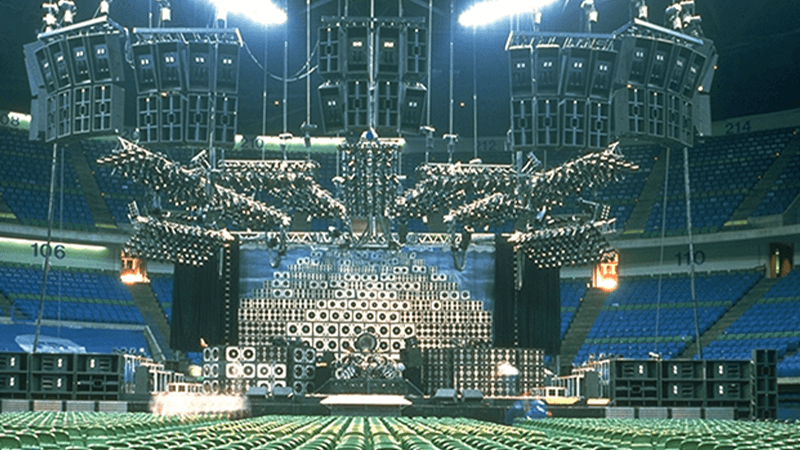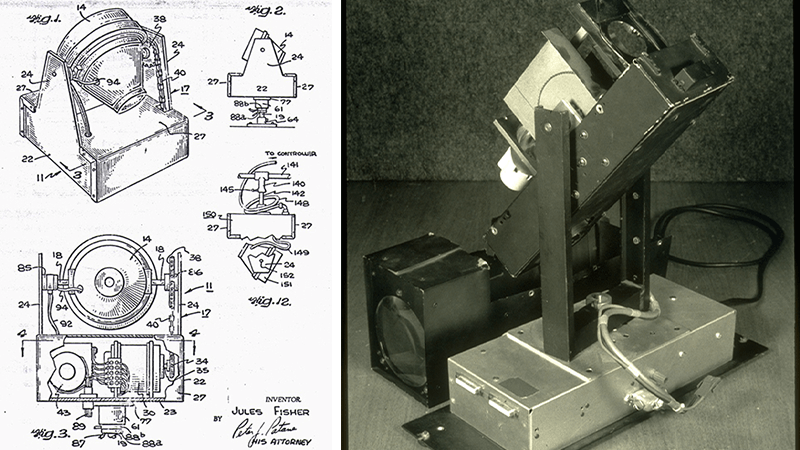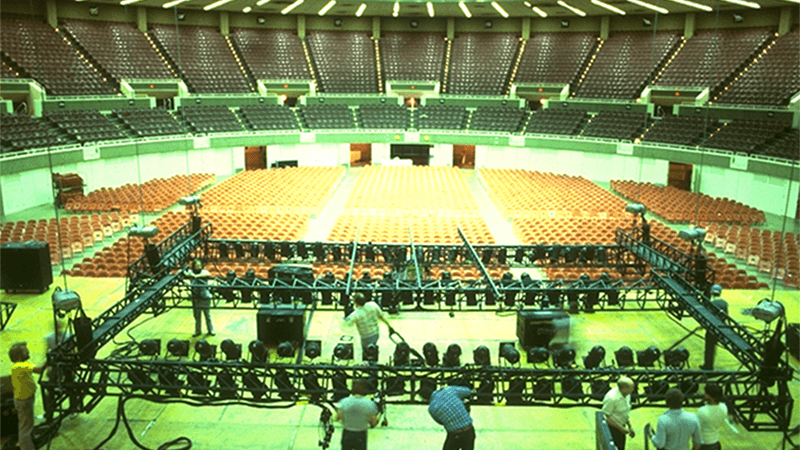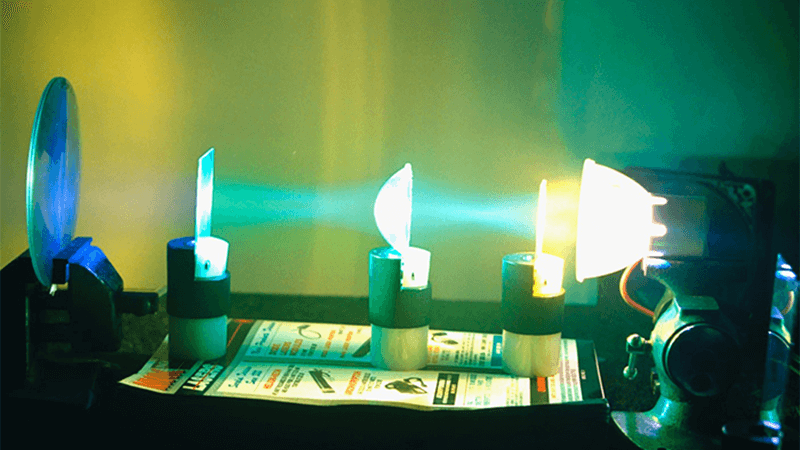From Early Beginnings to Modern Innovations
Genesis of Moving Lights
The story of moving lights began in the 1960s when Nikola Tesla's concept of "wireless power" sparked the idea for remote-controlled lighting systems. Early adopters of this technology, such as Vari-Lite, developed the first automated lighting fixtures that were able to move and change color remotely. This revolutionized the entertainment industry and paved the way for the moving lights we know today.

1970s: Pioneering the First Moving Light
In the 1970s, the development of computer-controlled lighting systems took the industry by storm. The first moving light, the "ACL" (Automated Color Lantern), was introduced by a company called Genlyte. This innovative fixture combined automated pan and tilt movement with color-changing capabilities, taking stage lighting to new heights.
1980s: The Breakthroughs in Moving Lights
The 1980s saw groundbreaking advancements in moving light technology. Manufacturers such as High End Systems and Martin Professional introduced state-of-the-art moving lights, including the Intellabeam and Roboscan series. These innovative designs allowed for more precise control, producing complex lighting effects that would become synonymous with live entertainment.

1990s: The Digital Revolution
The 1990s marked the beginning of the digital revolution in moving lights, with the advent of digital light processing (DLP) and the incorporation of video projection capabilities. This era saw the rise of high-resolution LED video walls and the development of digital moving lights, such as the Catalyst by High End Systems. At this time, moving lights have been widely used, but most of them are still non-LED light sources.
2000s: Expanding Horizons
The new millennium witnessed a significant expansion of moving light technology. The introduction of LED-based moving lights, such as the Martin MAC Aura and Clay Paky B-Eye, revolutionized the industry with their energy efficiency, color mixing abilities, and extended lifespans.
2010s: Advancements in Technology and Design
The 2010s saw a surge in innovation within the moving light industry. Cutting-edge designs like Robe's MegaPointe and Elation's Artiste series showcased advanced features, such as pixel mapping and multi-layer effects. Furthermore, the integration of 3D projection mapping and laser technology enabled even more spectacular visual experiences. Up to now, one Igracelite moving light can simultaneously achieve: beam, spot, wash, 3D projection mapping and laser light effects.

2000s: The Emergence of LED and Sustainability
The 2000s marked a significant shift in the industry as LED technology began to replace traditional lamp-based moving lights. The introduction of the Martin MAC Aura and Clay Paky B-Eye showcased the potential of LED-based fixtures, offering greater energy efficiency, longer lifespans, and superior color mixing capabilities. Additionally, this decade saw the growth of sustainability initiatives within the lighting industry, with manufacturers focusing on eco-friendly designs and production methods.
2010s: The Rise of Pixel Mapping and Multi-Effect Lights
The 2010s saw the introduction of pixel mapping technology and multi-effect moving lights, which allowed lighting designers to create more complex and engaging visual displays. The Robe MegaPointe and Elation Artiste series are prime examples of such innovations, offering advanced features like pixel mapping, beam shaping, and multi-layer effects.

Moving Light Control Systems: A Brief Overview
Throughout the history of moving lights, control systems have played a crucial role in the evolution of the technology. From early computer-controlled systems to modern DMX and Art-Net protocols, advancements in control systems have allowed for increasingly precise and complex control of moving lights.

Early Computer-Controlled Systems
In the 1970s and 1980s, the first computer-controlled systems emerged, enabling the control of moving lights through pre-programmed cues and sequences. These systems laid the foundation for the development of more sophisticated control methods.
DMX and Art-Net Protocols
DMX (Digital Multiplex) and Art-Net are two widely-used protocols for controlling moving lights. DMX, introduced in the late 1980s, allows for the control of up to 512 channels per universe. Art-Net, an ethernet-based protocol, was developed in the late 1990s to address the limitations of DMX, enabling control of a much larger number of devices.
A Look at Industry Leaders
Numerous manufacturers have contributed to the evolution of moving lights, each bringing their own unique innovations to the table. A few notable industry leaders include:
- Vari-Lite: Pioneering the first intelligent fixtures and pushing the boundaries of lighting technology for decades.
- Martin Professional: Known for their quality moving lights, such as the MAC series, and their contributions to LED technology.
- Clay Paky: Renowned for their creative designs and groundbreaking products like the B-Eye series.
- Robe Lighting: Continuously introducing innovative products like the MegaPointe and Tarrantula, featuring pixel mapping and advanced effects. They've been doing a great job over the years, but there's also a bunch of up-and-comers who have been working hard: CK, Igracelite, EK, etc.

Frequently Asked Questions about Moving Lights
1. What is a moving light?
A moving light, also known as a moving head or automated light, is a versatile lighting fixture commonly used in the entertainment industry. It features motorized movement, allowing it to pan and tilt, and often includes other features such as color mixing, beam shaping, and gobo projection.
2. How are moving lights controlled?
Moving lights are typically controlled through lighting consoles or software that use protocols like DMX (Digital Multiplex) or Art-Net. These systems send commands to the moving light fixtures to control various attributes, such as intensity, pan and tilt, color, gobo selection, and more.
3. What are the main components of a moving light?
The main components of a moving light include:
- Light source: This could be a traditional lamp or an LED module.
- Optics: These include lenses and reflectors that help focus and shape the light beam.
- Pan and tilt motors: These motors enable the fixture to move horizontally (pan) and vertically (tilt).
- Color mixing system: This can be achieved using color wheels, CMY (cyan, magenta, yellow) color mixing, or RGB (red, green, blue) LED mixing.
- Gobo wheel: This contains patterns (gobos) that can be projected onto surfaces or used to shape the light beam.
- Beam shaping mechanisms: These can include zoom, focus, frost, iris, and prism features.
- Housing: plastic, metal or cast aluminum. Nowadays, most manufacturers claim to be customized moving head lights, but they actually just change the casing.
4. What are the benefits of using moving lights?
Moving lights offer several advantages over conventional static lighting fixtures, including:
- Versatility: Moving lights can be used to create a wide range of dynamic effects and change positions, colors, and patterns in real-time.
- Efficiency: Using moving lights can reduce the number of fixtures required to create complex lighting designs.
- Customization: Moving lights allow for greater creative freedom in lighting design, as they can be programmed to create unique looks and effects.
- Energy savings: Modern LED-based moving lights consume less power and generate less heat than traditional lamp-based fixtures, leading to energy savings and a reduced environmental impact.
5. What industries commonly use moving lights?
Moving lights are widely used in various industries, such as:
- Live events: Concerts, theater productions, and corporate events often use moving lights to create dynamic lighting designs and enhance the audience's experience.
- Television and film: Moving lights are used on film sets and TV studios to achieve precise control over lighting and create specific moods and atmospheres.
- Nightclubs and entertainment venues: Moving lights are often used in nightclubs, bars, and other entertainment venues to create an immersive and engaging environment.
- Architectural lighting: Moving lights can be used for highlighting architectural features, creating dynamic façade lighting, or as part of an integrated lighting design for large-scale installations.
Conclusion
The history of moving lights is a testament to the power of innovation and technological advancement. From the early beginnings of remote-controlled lighting systems to the modern marvels of LED and pixel mapping technology, moving lights have revolutionized the entertainment industry and continue to shape the future of live events and productions. With developments in AI, machine learning, and sustainable design on the horizon, the possibilities for moving light technology are limitless.
